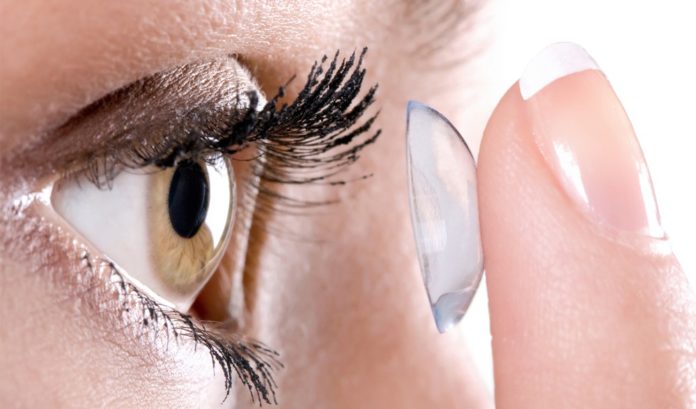
Nearly a million Americans visit the doctor each year for eye infections, say U.S. public health officials, who warn that improper contact lens care is the primary cause for most of those infections and, in some cases, can even lead to blindness.
The new report, published in the CDC’s Morbidity and Mortality Weekly Report (MMWR), provides the first national estimates of the annual number of Keratitis cases.
“We’ve long suspected that Keratitis pose a significant burden on Americans’ health and on our health care system, both in individual cases and in periodic multistate outbreaks associated with contact lens wear. But until now we didn’t have any estimates of how large that burden might be,” said study author Dr. Jennifer Cope, a medical epidemiologist at the CDC’s National Center for Emerging Zoonotic and Infectious Diseases.
In 2010, people made 930,000 doctor’s visits plus 58,000 emergency department visits in the United States for microbial keratitis, according to the CDC report. Microbial keratitis is an infection of the eye’s transparent outer covering caused by bacteria, fungi, amebae or viruses.
The biggest risk factor for microbial keratitis is improperly wearing contact lens — for example, wearing the lenses overnight, not keeping contact lens cases clean or not replacing cases frequently, the CDC said.
“Among the estimated 38 million contact lens wearers in the US, poor storage case hygiene, infrequent storage case replacement and overnight lens wear are established preventable risk factors for microbial keratitis, contact lens-related inflammation and other eye complications,” the authors write.
In more than three-fourths (76.5 percent) of the visits, the person was given a prescription for antibiotics, the report found. The researchers estimated that visits for these eye infections result in $175 million in direct health care costs yearly.
Keratitis can cause eye pain, redness, blurred vision and even blindness in severe cases. In July, a woman in Taiwan reportedly went blind because she left her contact lenses in for six months, and developed an infection from an amoeba.
“Contact lenses can provide many benefits, but they are not risk-free — especially if contact lens wearers take shortcuts and don’t take care of their contact lenses and supplies,” Dr. Jennifer Cope, a CDC medical epidemiologist, said in a statement.
Good hygiene habits for contact lens wearers
The CDC recommends the following steps to ensure good hygiene and habits in caring for and storing contact lenses in order to minimize the risk of keratitis:
- Wash hands with soap and water and dry them well before touching contact lenses
- Rub and rinse contact lenses in disinfecting solution every time you remove them
- Use only the contact lens solution recommended by an eye care provider
- Never top up the solution in the contact lens case; always use a fresh batch each time and never mix fresh solution with old or used solution
- Never use water or saliva to clean contact lenses and never store them in water
- Do not sleep in contact lenses unless prescribed to do so by an eye care provider
- Keep water away from contact lenses and take them out before showering, swimming or using a hot tub
- Take care of the contact lens case: rub and rinse it with contact lens solution, dry it with a clean tissue and store it upside down with the caps off after each use
- Replace the contact lens case with a new one every 3 months
- Visit an eye care provider at least every year, or more often if your health care provider recommends it
- Ask your eye care provider about how to care for your contact lenses and supplies
- If you experience pain, discomfort, redness in the eye or blurred vision, take your lenses out straight away and call an eye care provider
- Carry a pair of glasses with you in case you need to take out your lenses.
